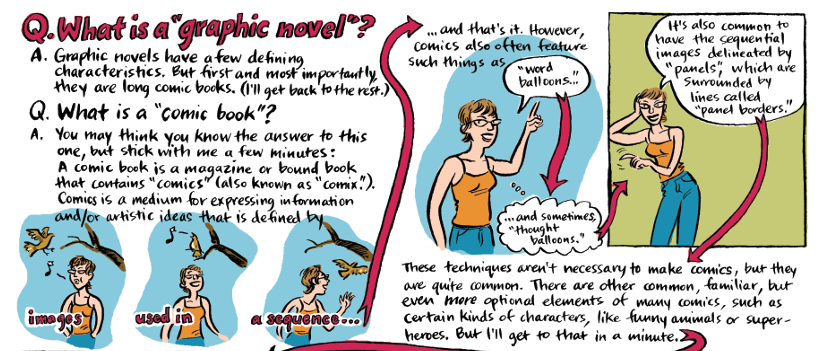Topic: WORDS + IMAGE = MEANING
Activities
Warm Up Drawing 5 min
Student Lead Reading Response 20 min
REVIEW CRITIQUE GUIDE:
- Clarity
- Story Structure
- Reading Order
- Rhythm
- Writing
- Uniqueness
- Craft
SHARE: Homework 1 – Self Portraits 20 min
DISCUSS: Our First Character – an exploration of self / personal voice.
REVIEW: Lynda Barry’s Diary Format.
LECTURE: THE LANGUAGE an Over View of Comics Grammar:
- Reading Order
- Panel
- Gutter
- Tier
- Flow and Eye Track
- Beats and Timing
- Point Of View
- Shot Choice
- Pagination/ Page Turn
LECTURE: WORDS + IMAGE = MEANING, SHOW OR TELL!
DISCUSSION: What are some of the ways words and images interact in comics? Where do we see writing in comics? How might the meaning of a drawing change when combined with different words?
IN CLASS ACTIVITIES: New Yorker Captions
LECTURE: The 1 Panel COMIC
IN-CLASS ACTIVITY: Ivan Brunetti meets – Overheard in NY!
SHARE: 2-3 Final Project Ideas 30 min
Due Next Week
Homework:
- In Sketchbook (aim for 5) DAILY DIARY PAGES
- Complete 1-Panel Comics (aim for 3-5) based on your diary observations.
- Use the Language of comics purposefully. Consider how text and image interplay. Consider how a scene reads from differing points of view and uses text in different ways. What happens when information is conveyed through dialogue? Through captions? Through background text embedded in illustrations?
- Bring your 1-panel comics to a level you consider FINISHED – They can be simple, or more detailed; Stylized or more realistic. Try using ink to finalize and tighten the rough pencil lines.
- FULL DESCRIPTION BELOW
- Workshop your 2-3 FINAL PROJECT IDEAS. By next week’s class, you should close in on one you would like to pursue and have a rough outline.
READ: Jessica Abel – What is a Graphic Novel (Print me and hang me up!)
READ: Jessica Abel Chapters 1 & 2 Drawing Words and Writing Pictures
READ: Chapters 3 & 4 Understanding Comics
READ: The Realist – Asaf Hanuka
OPTIONAL ACTIVITY: DISCORD ONBOARDING (over zoom)
**DISCUSSION ON DISCORD**






Recent Comments